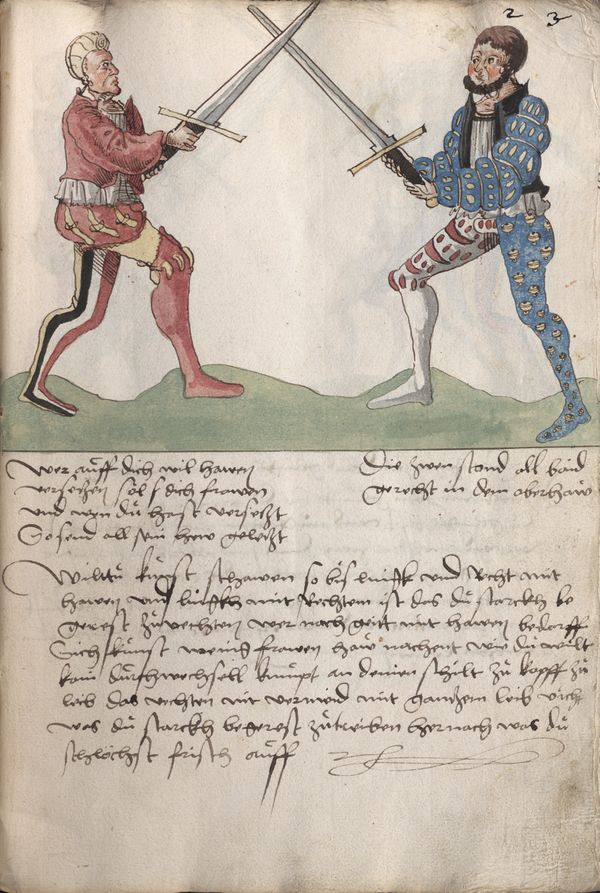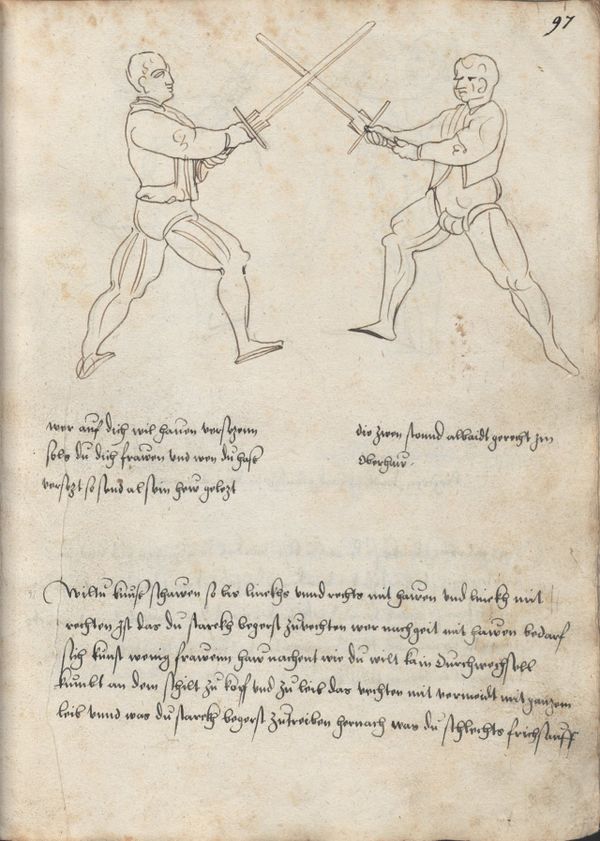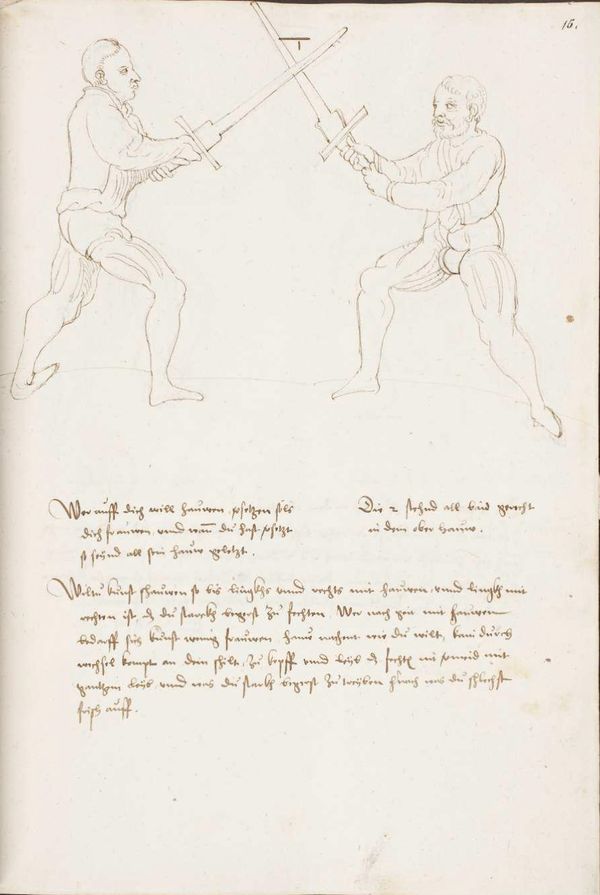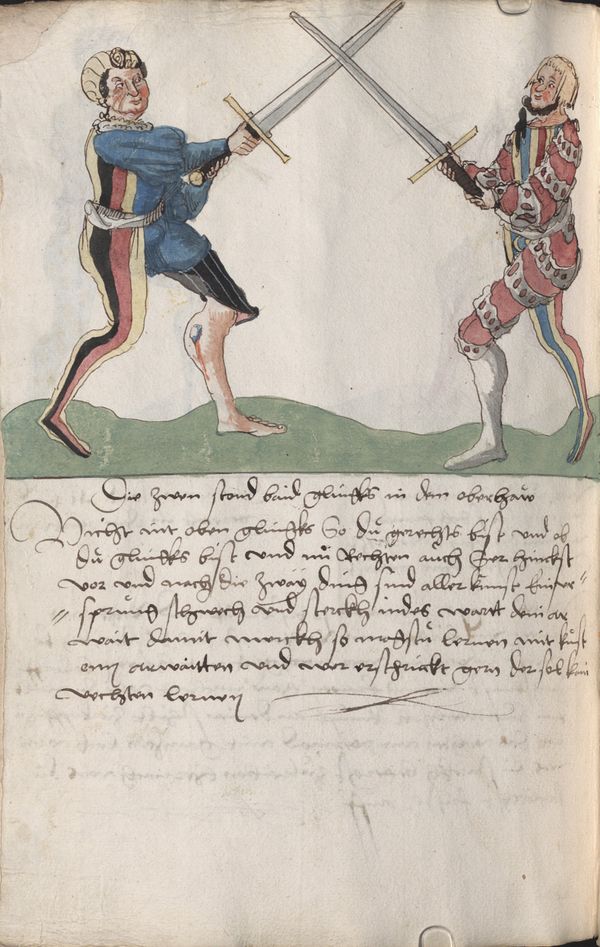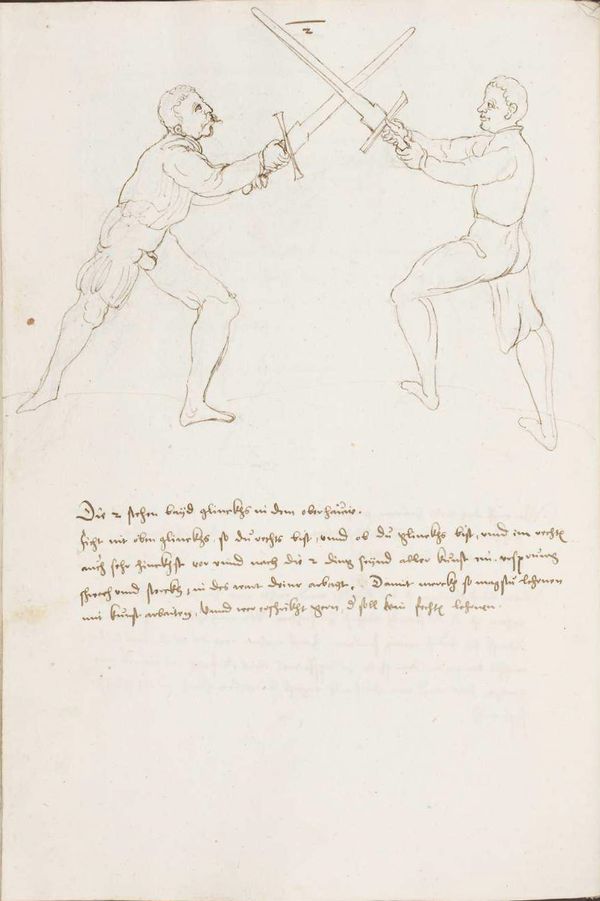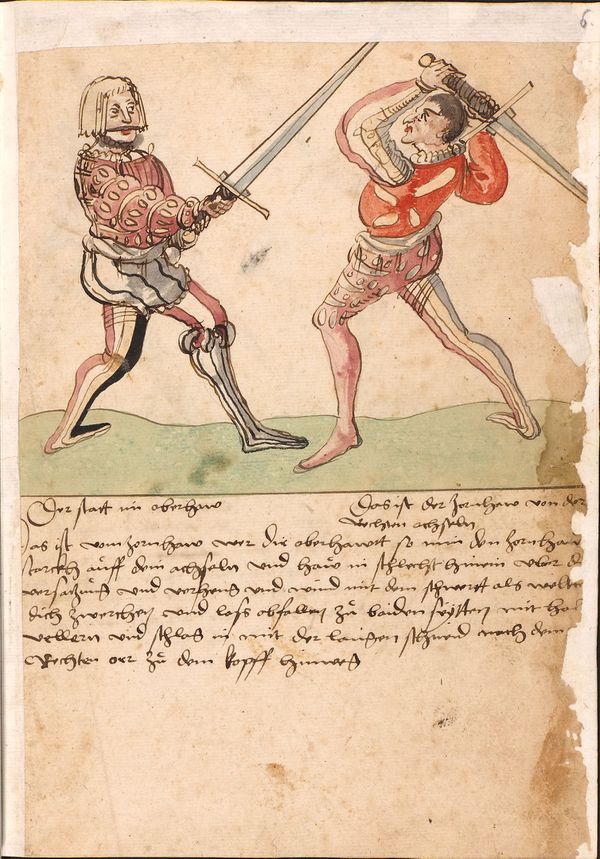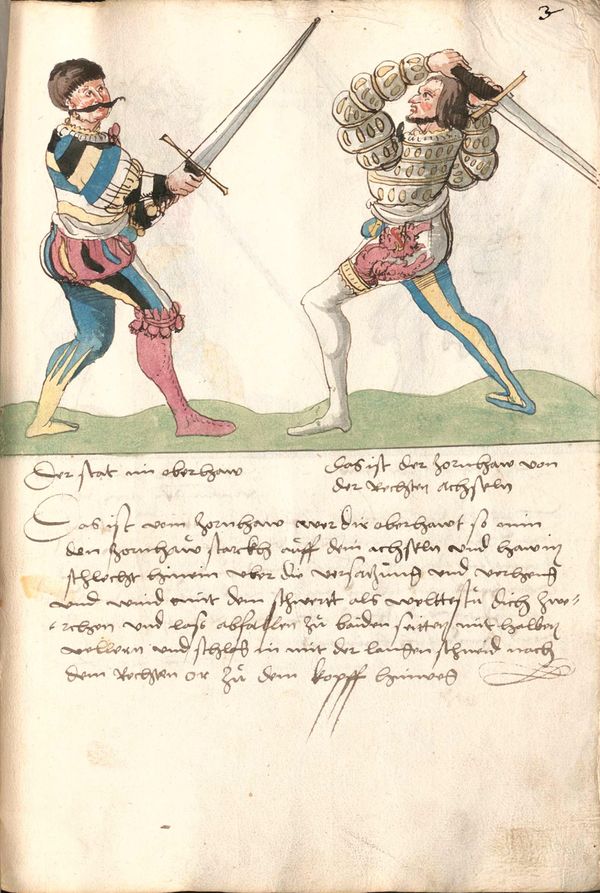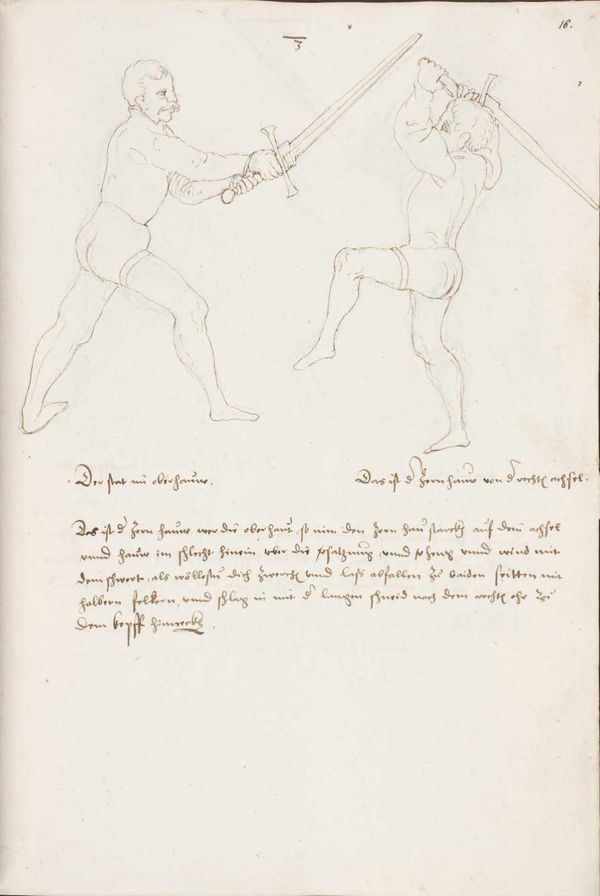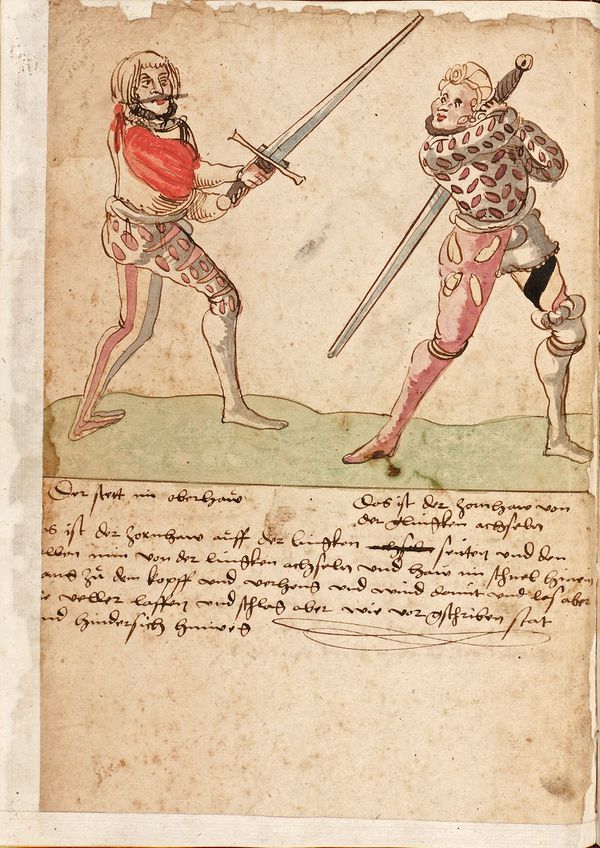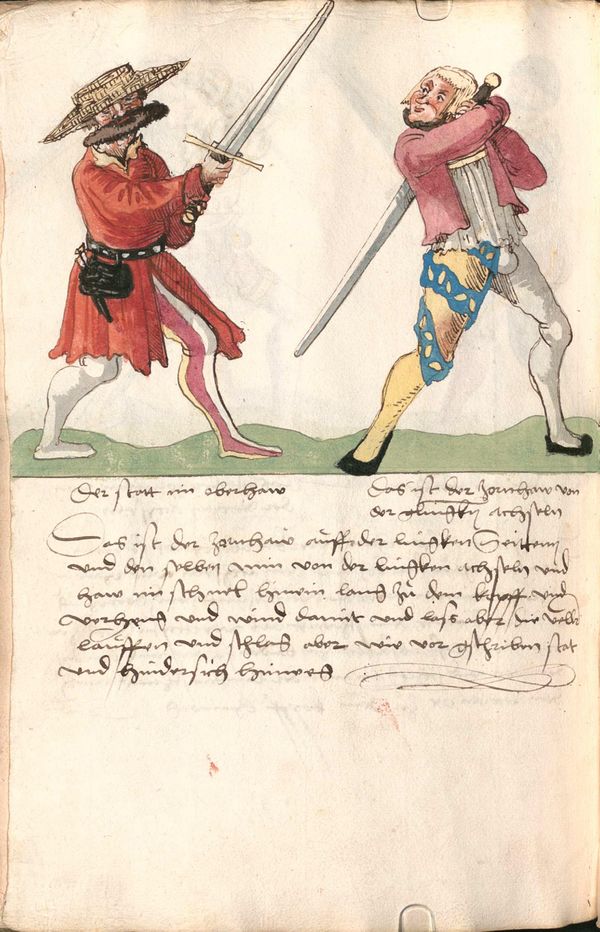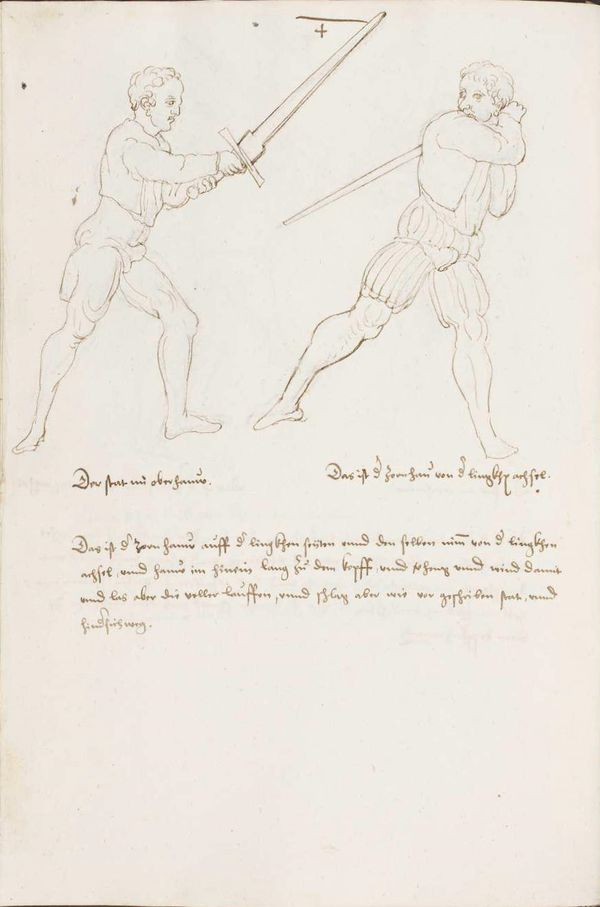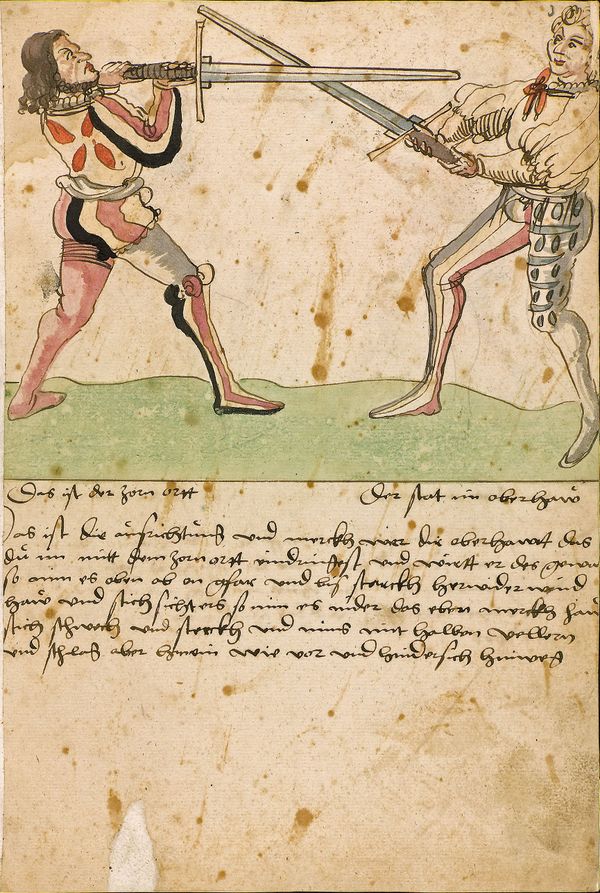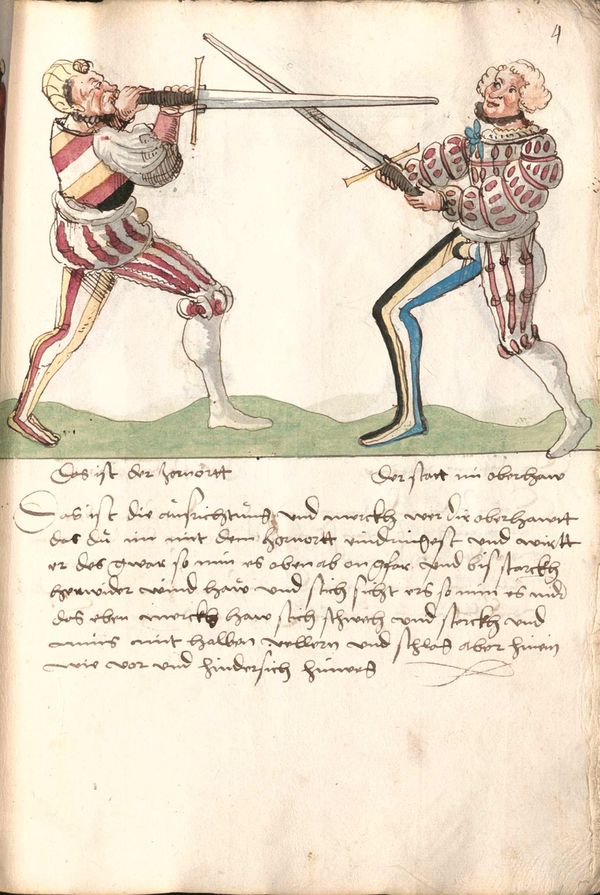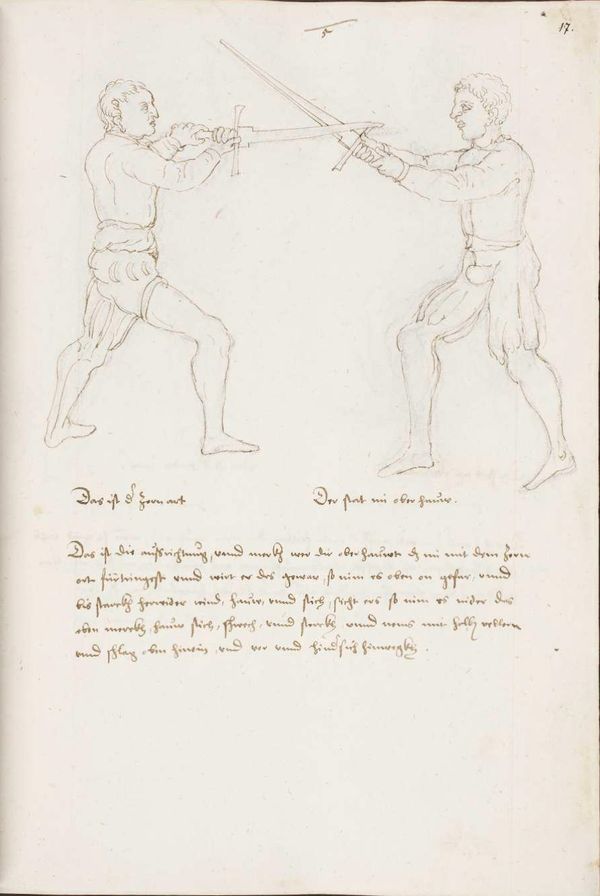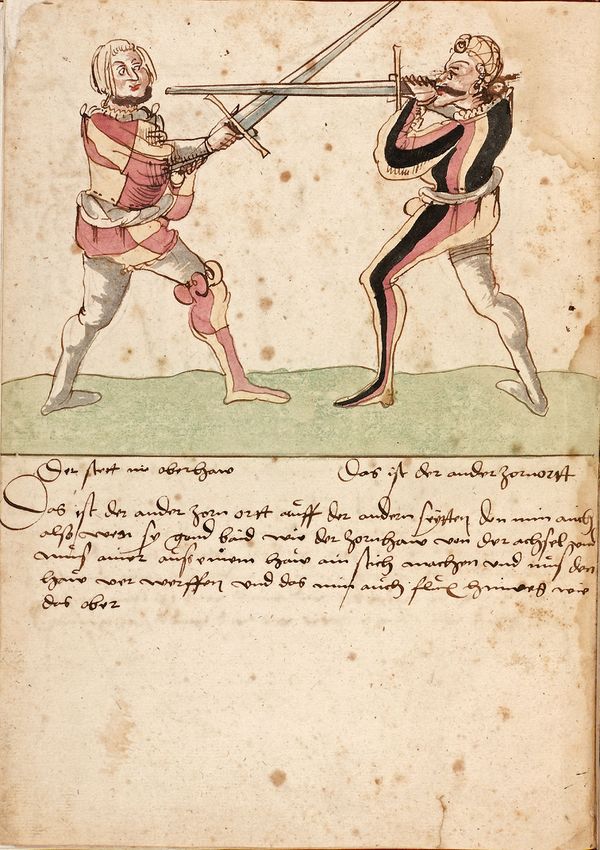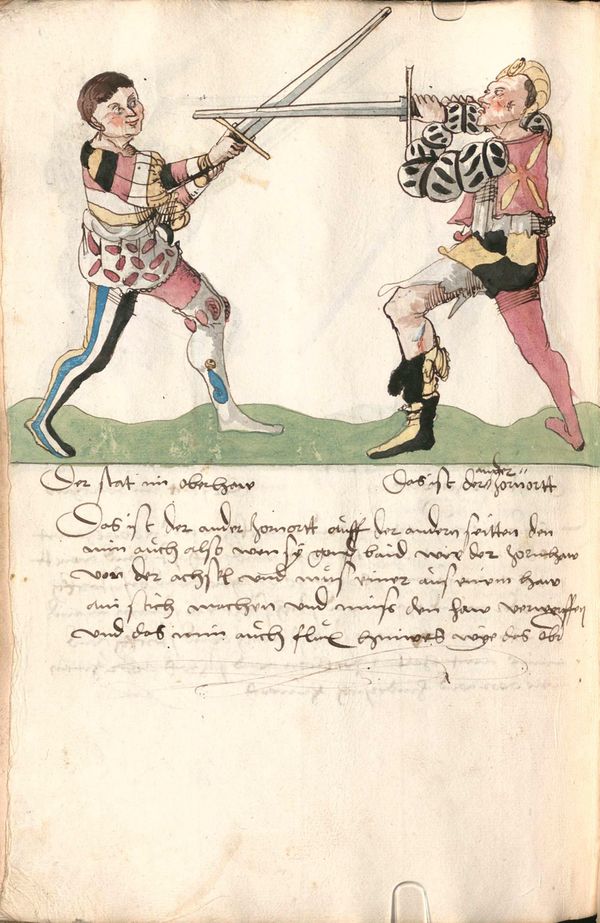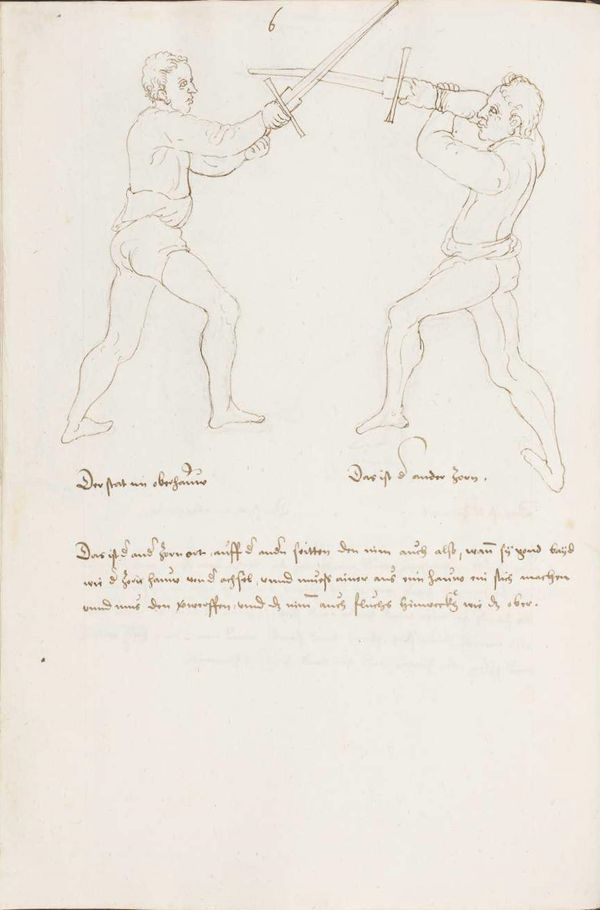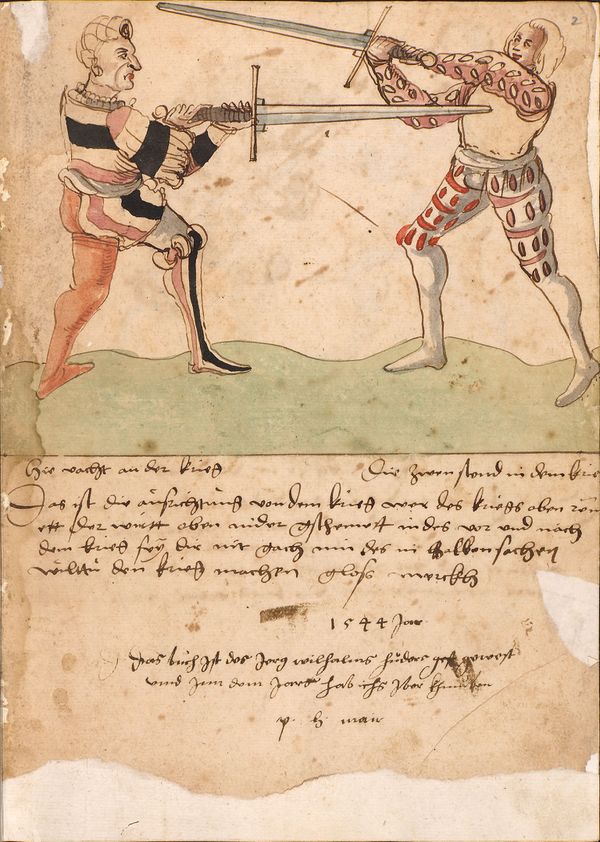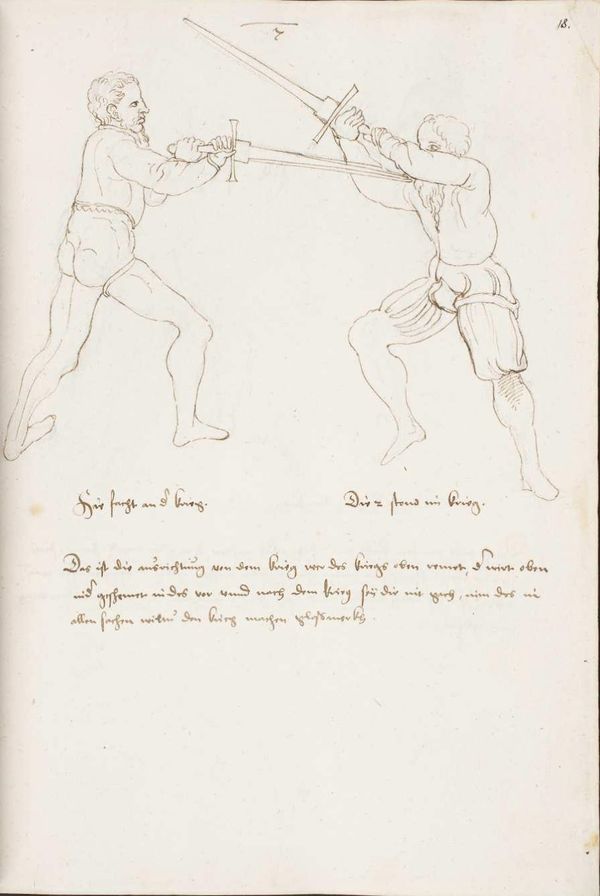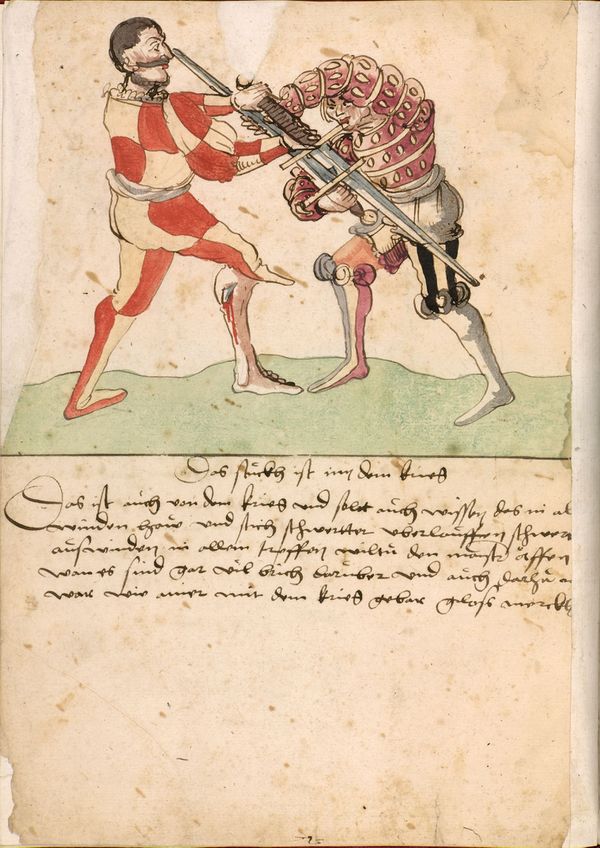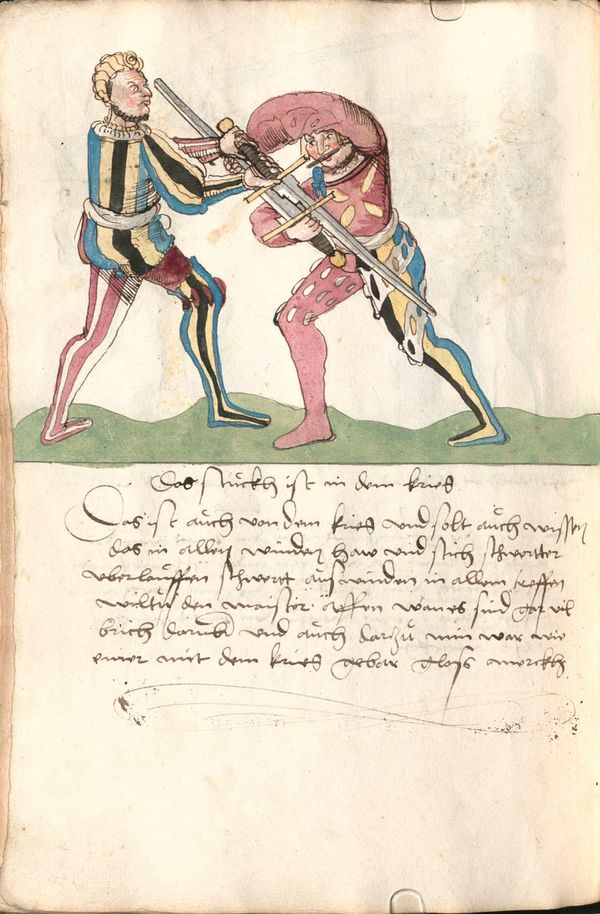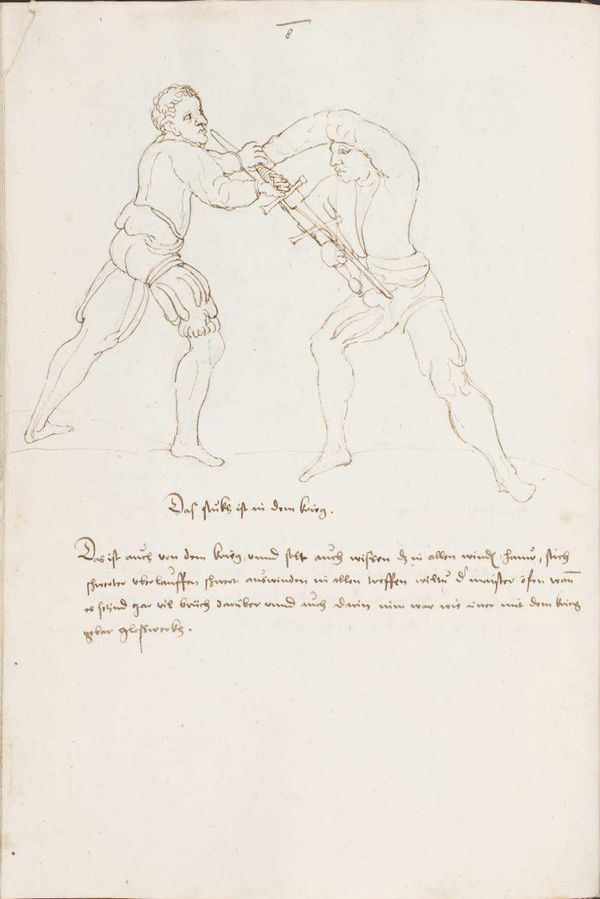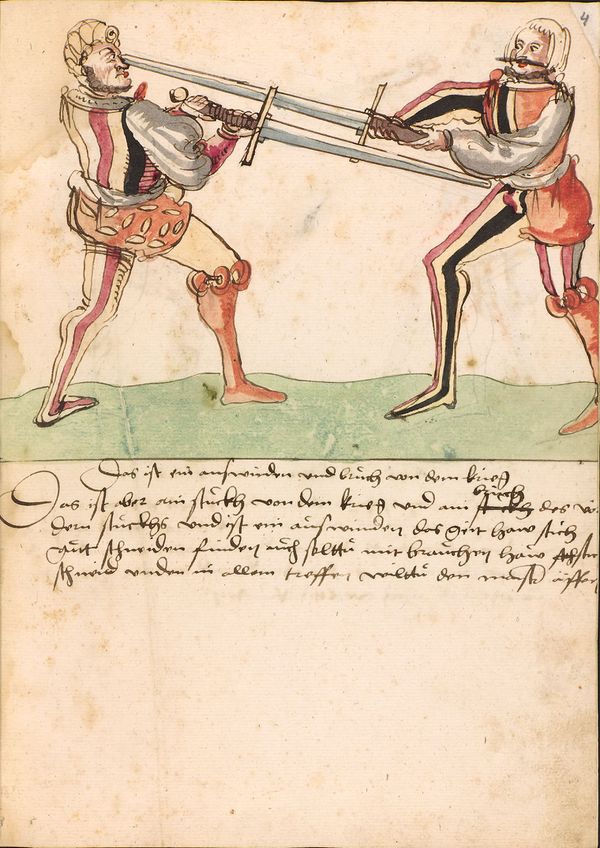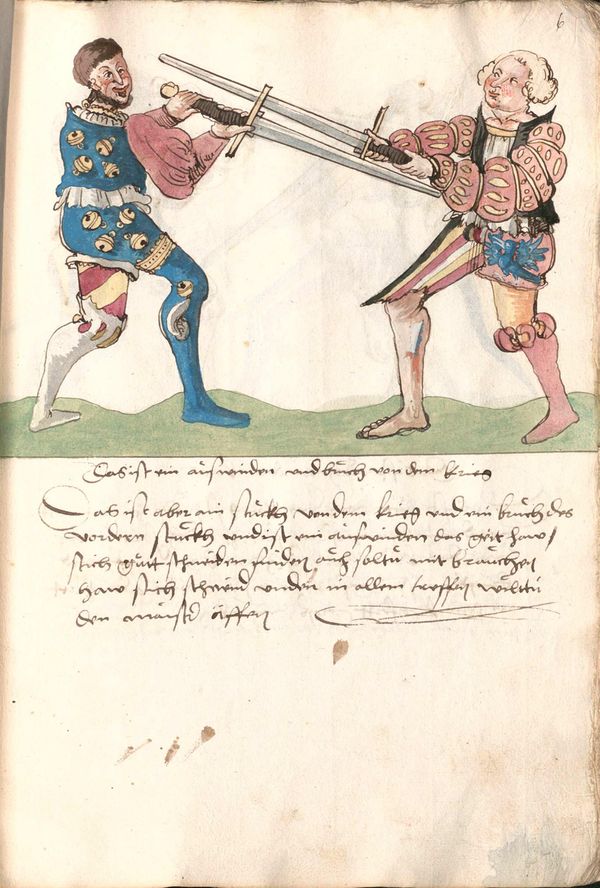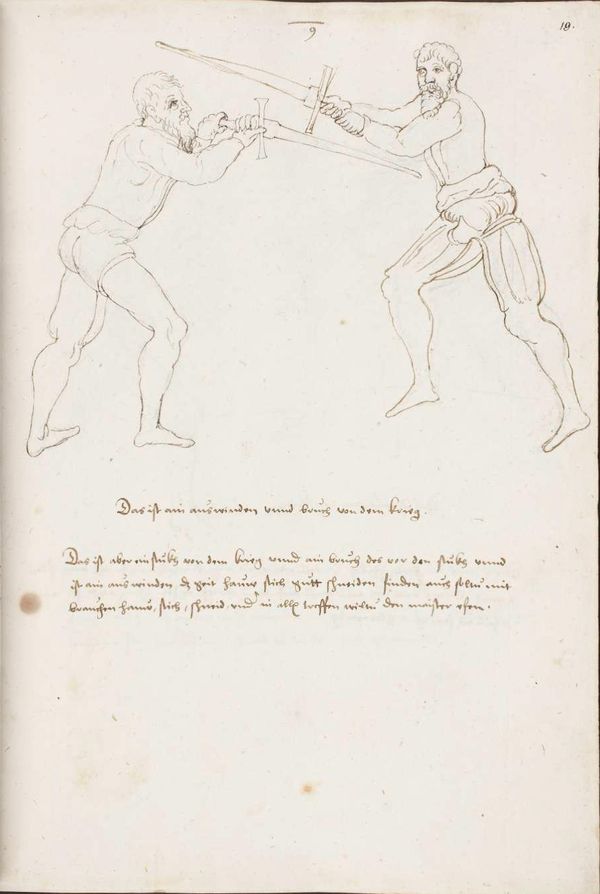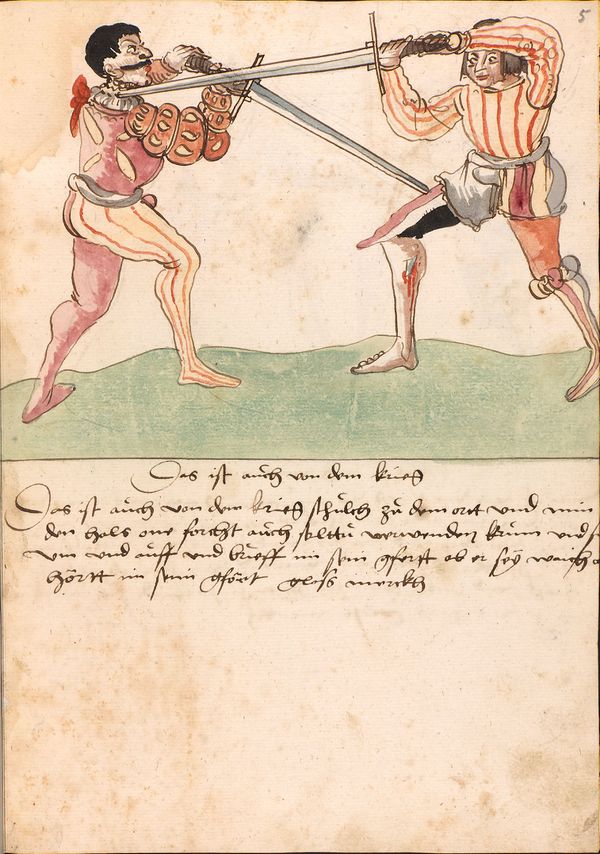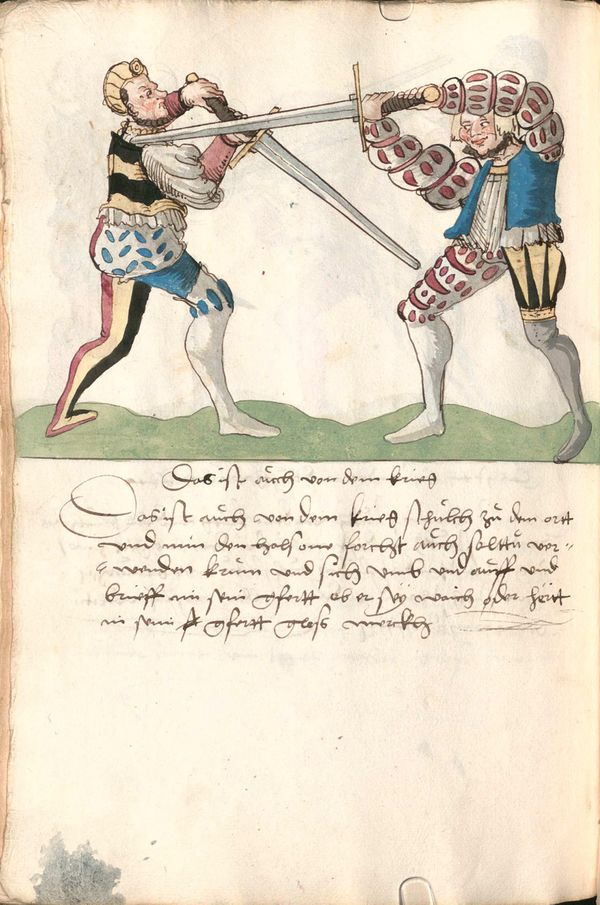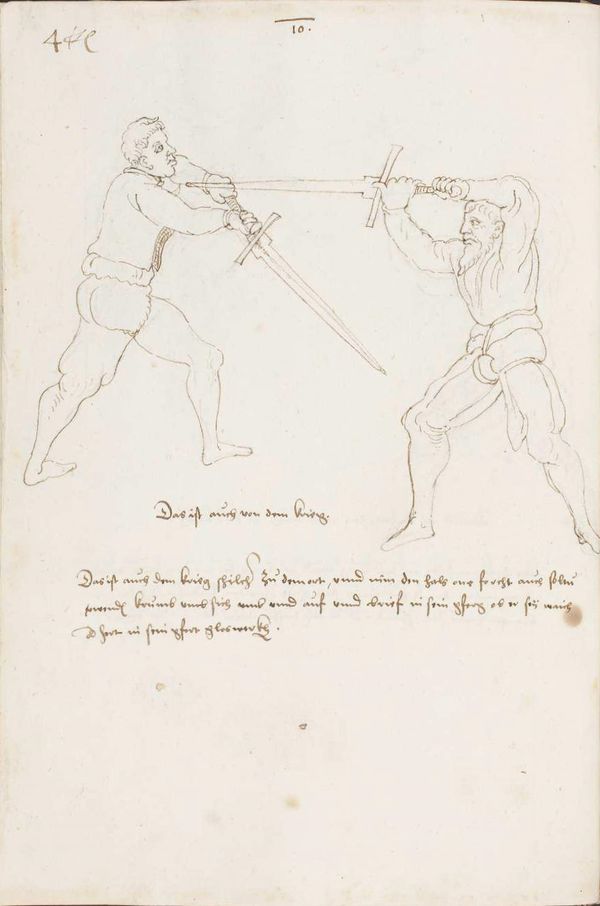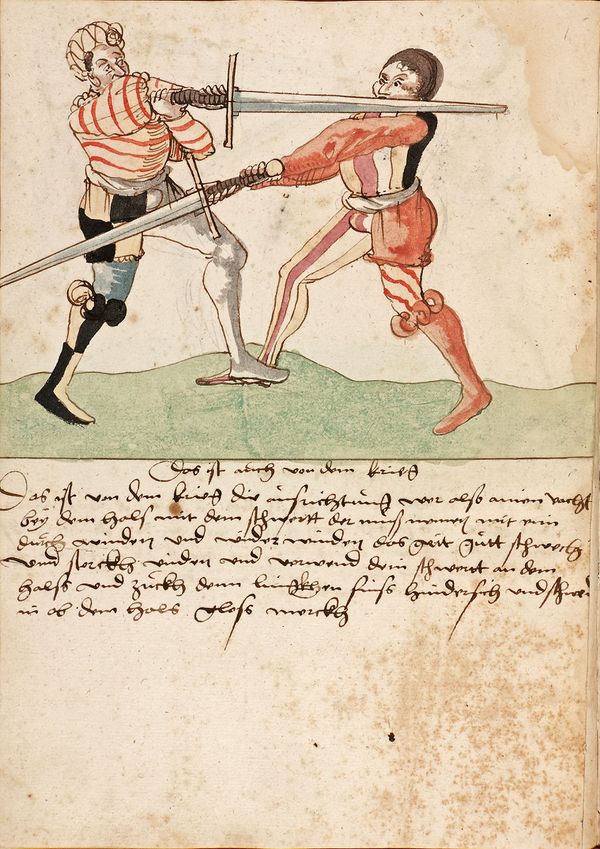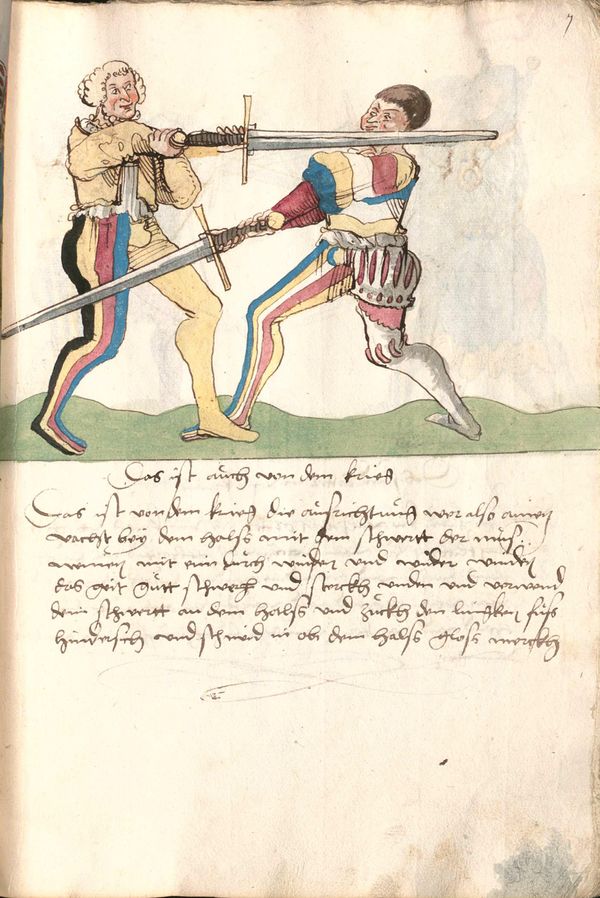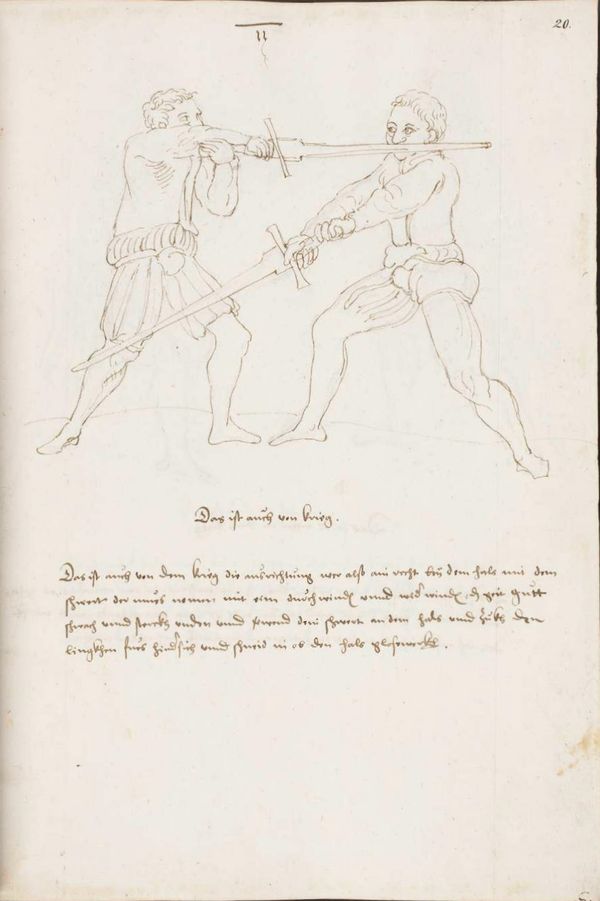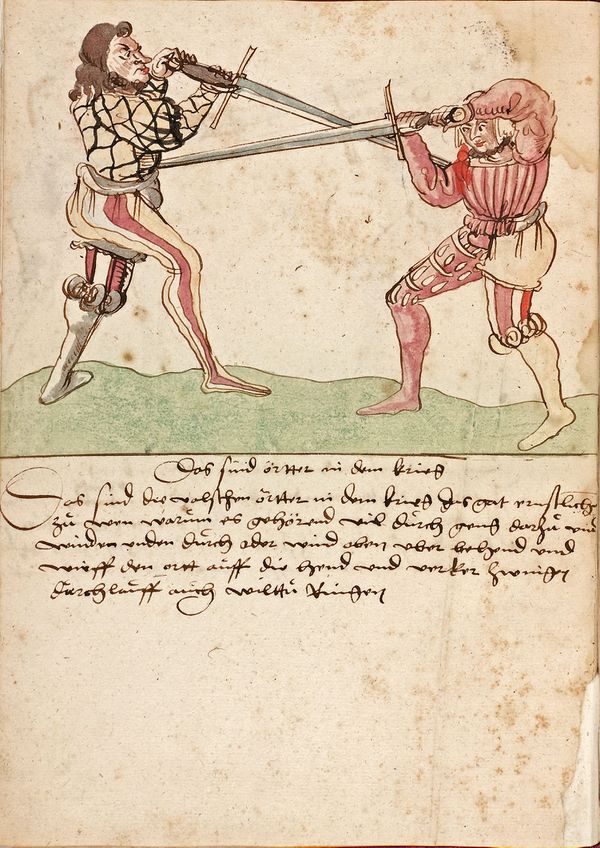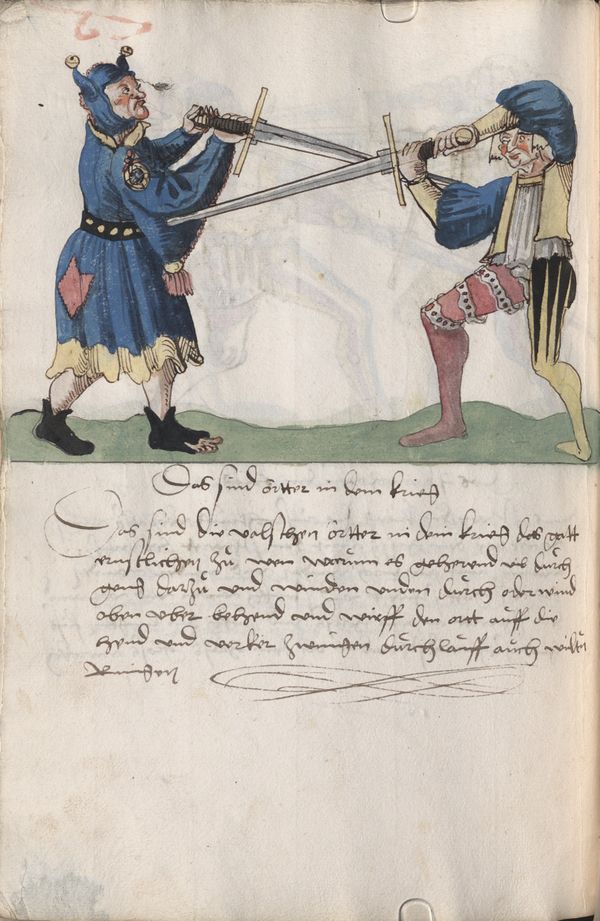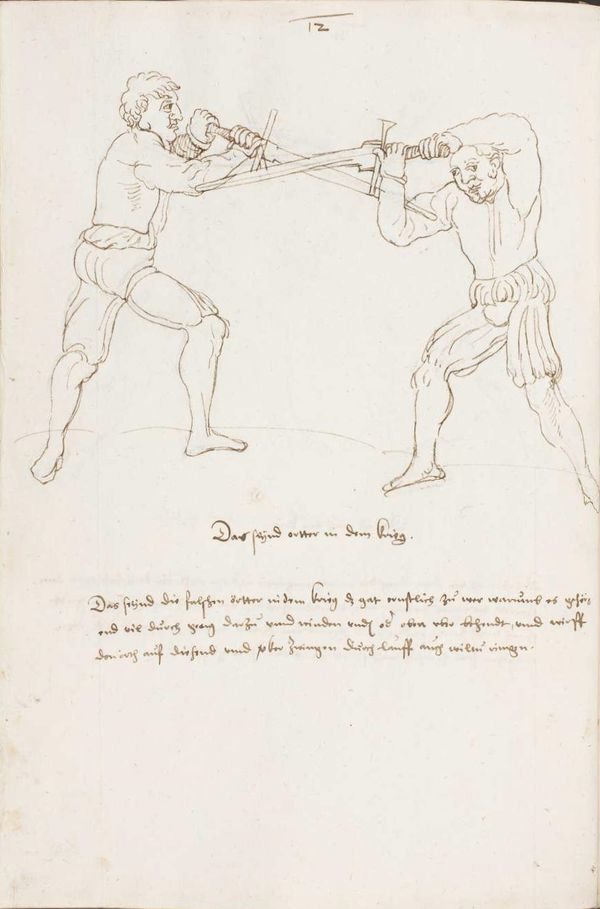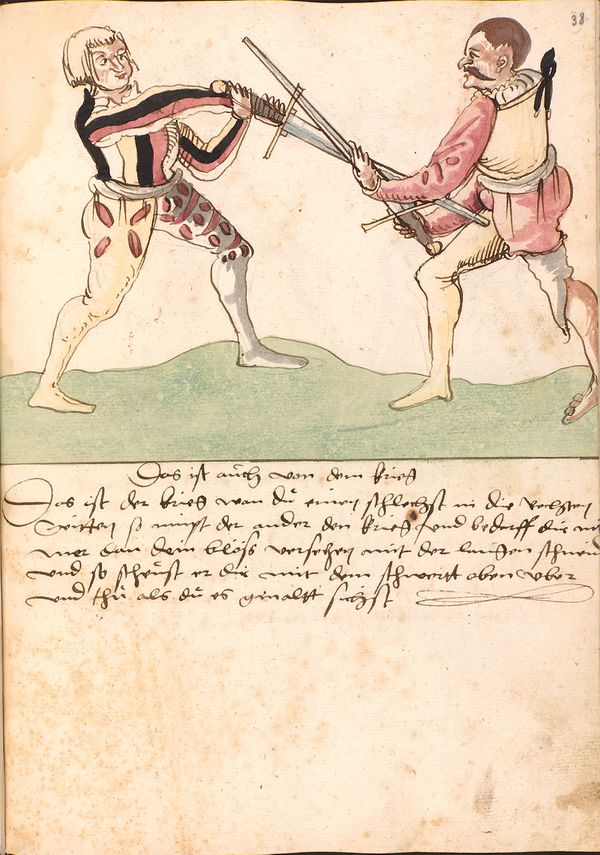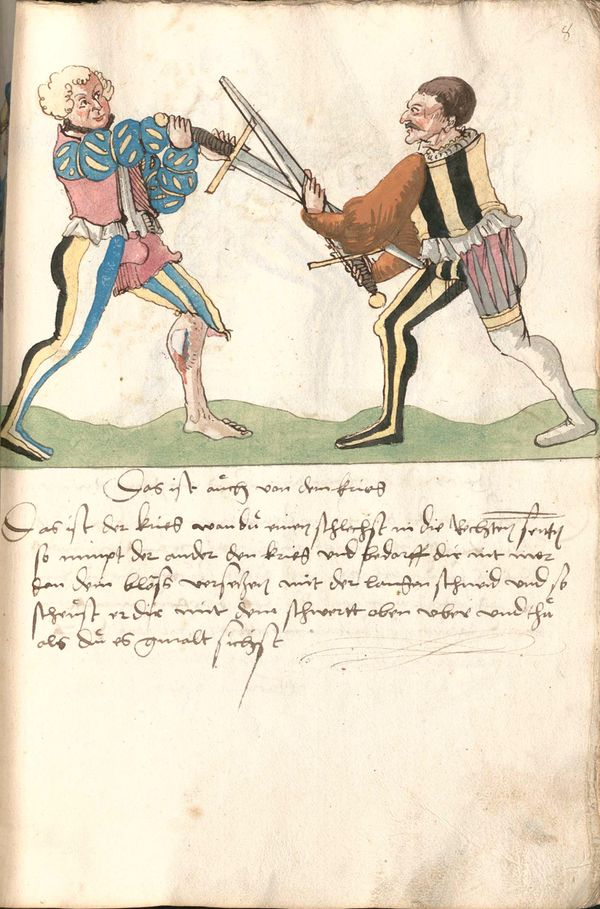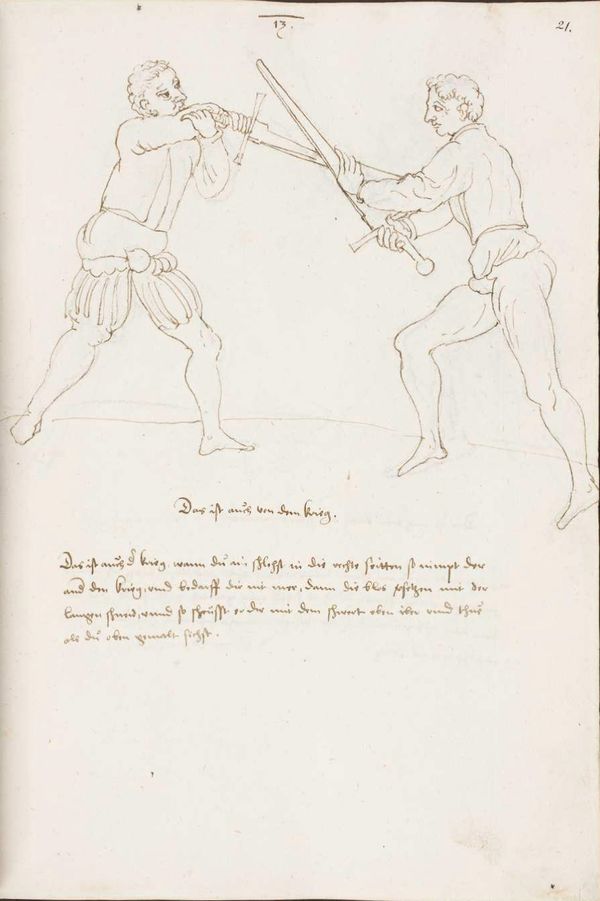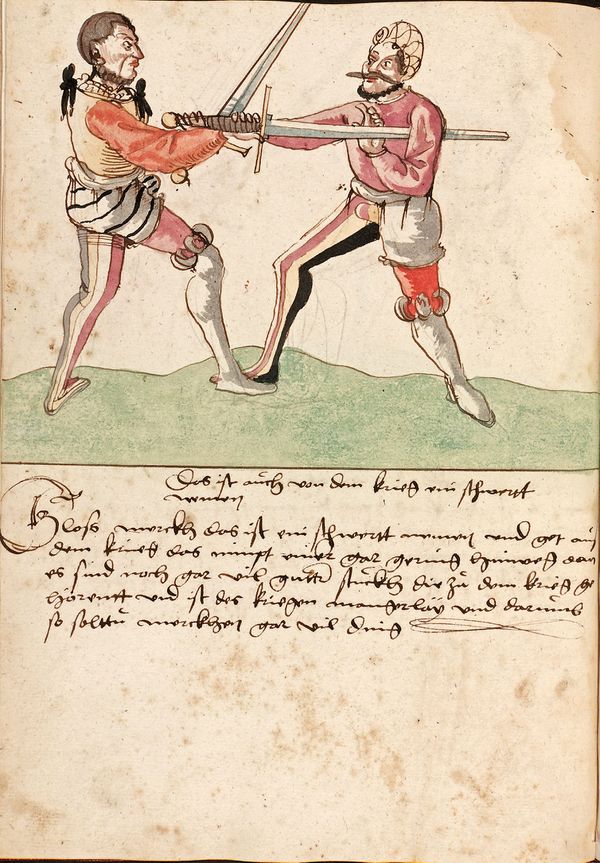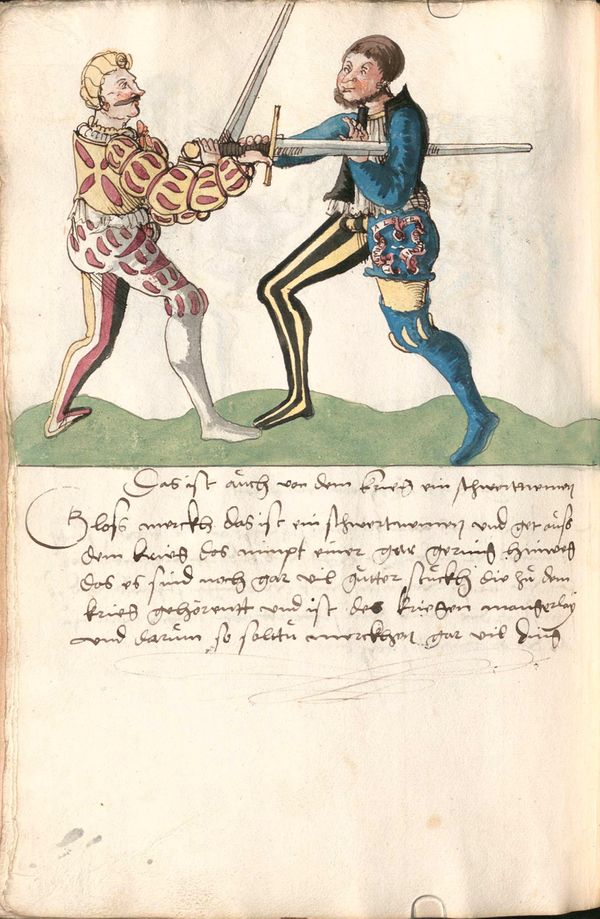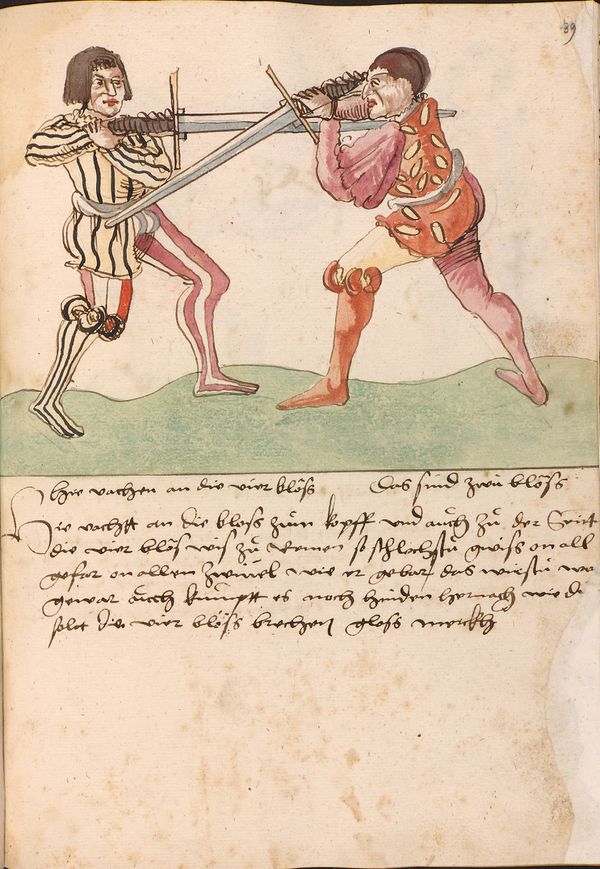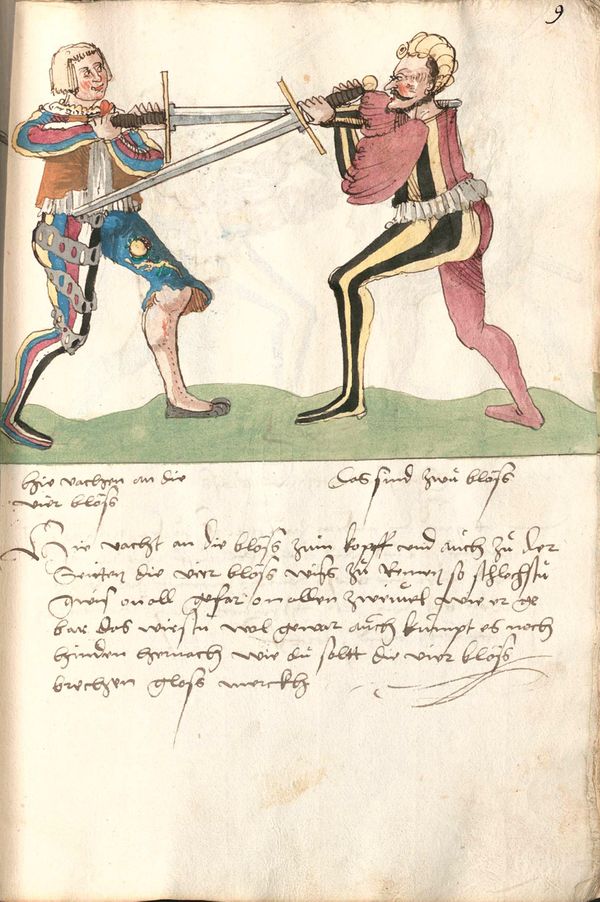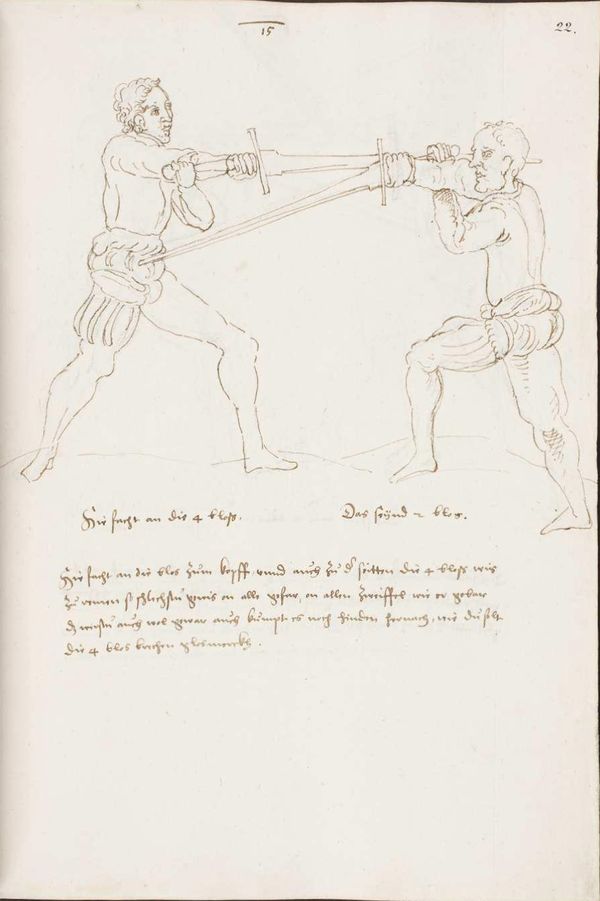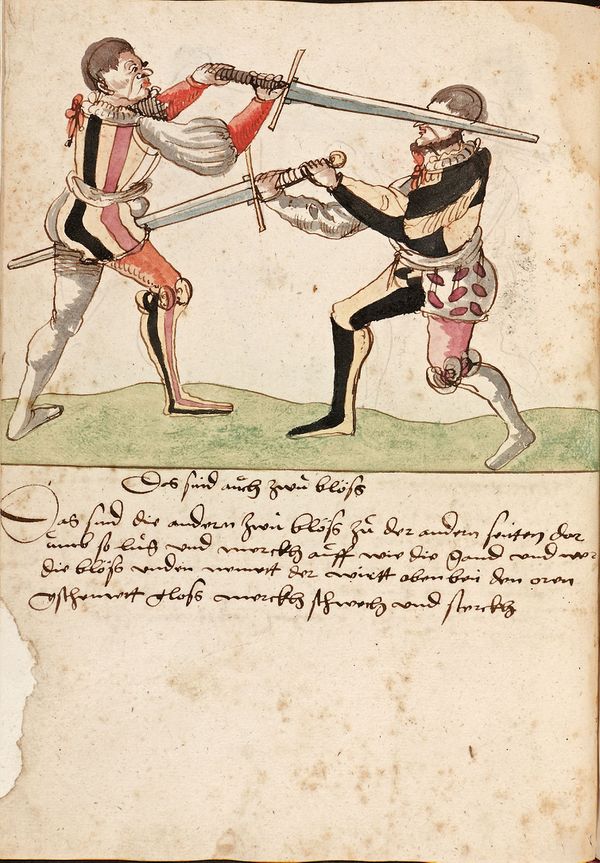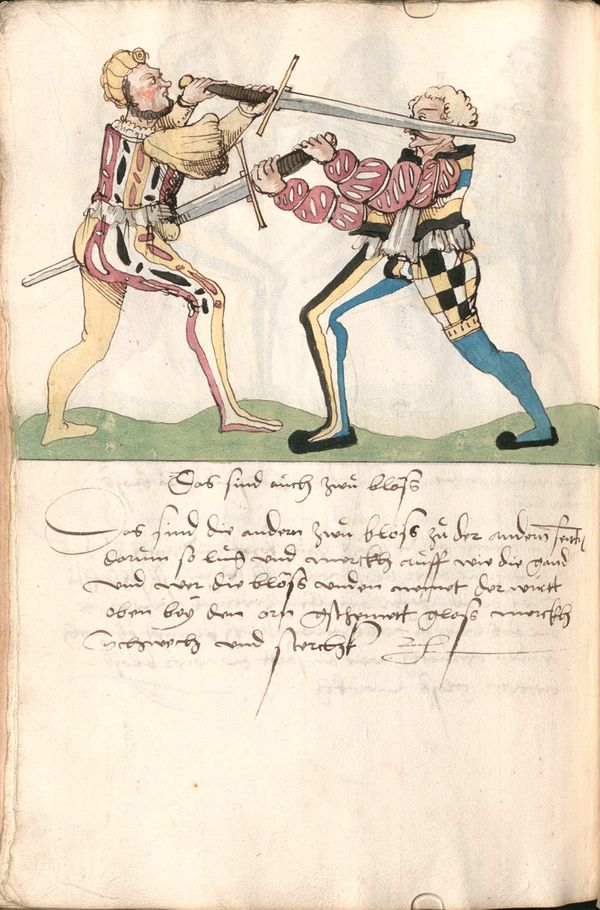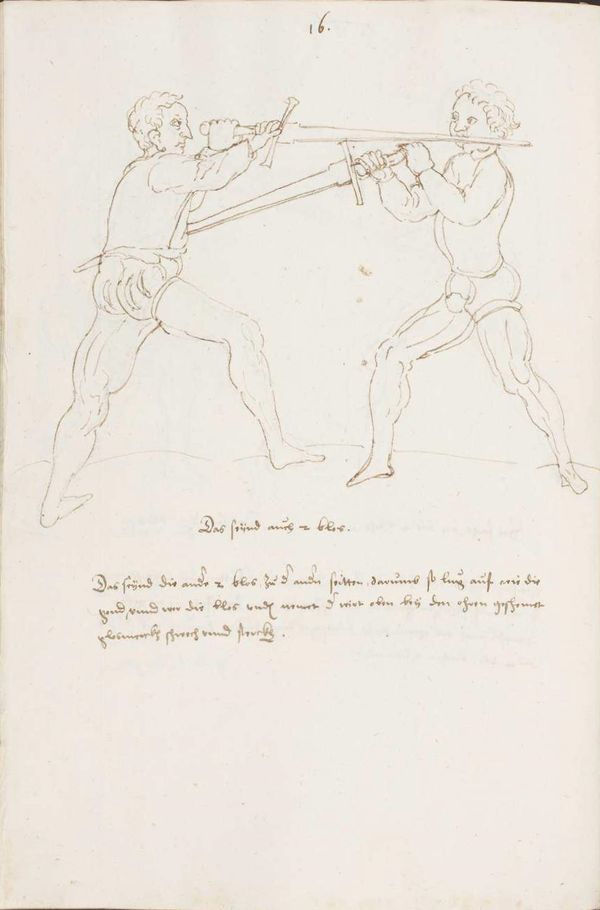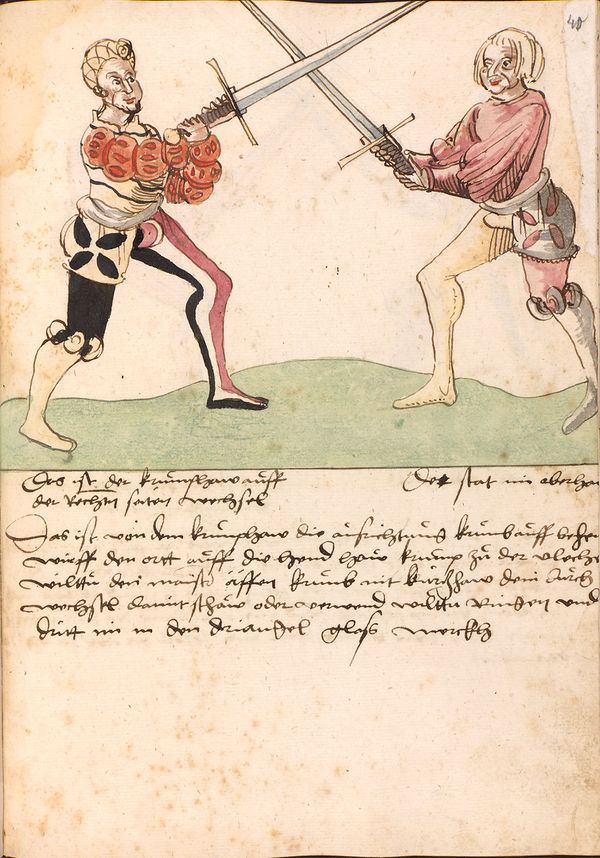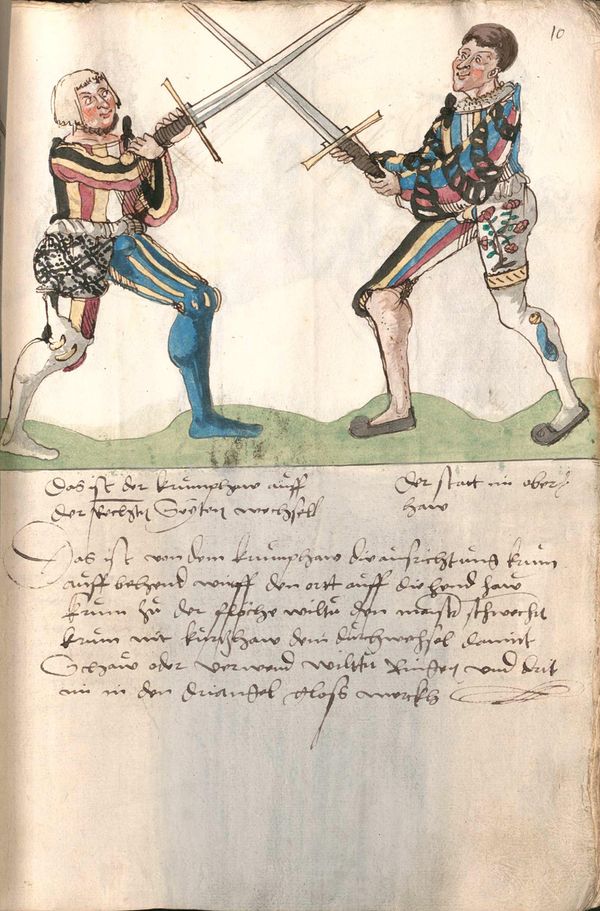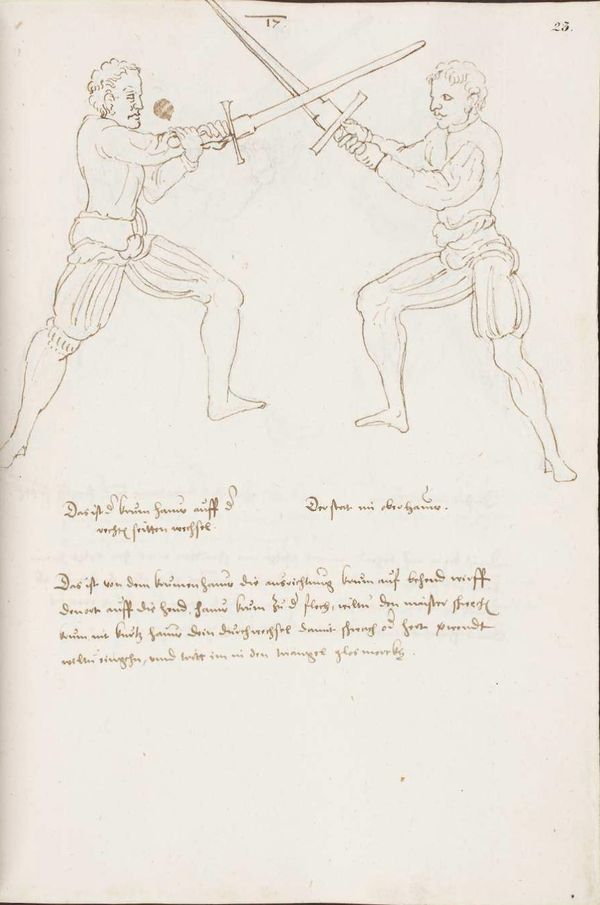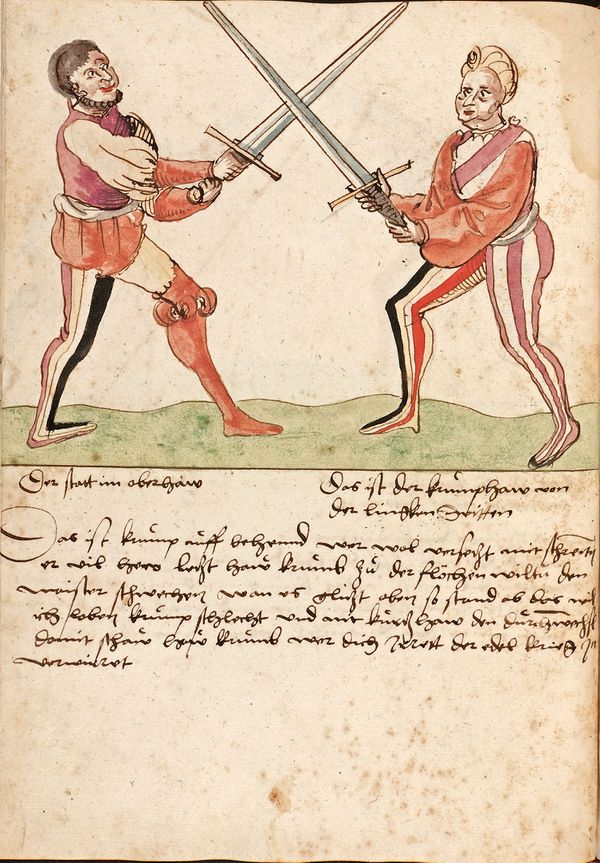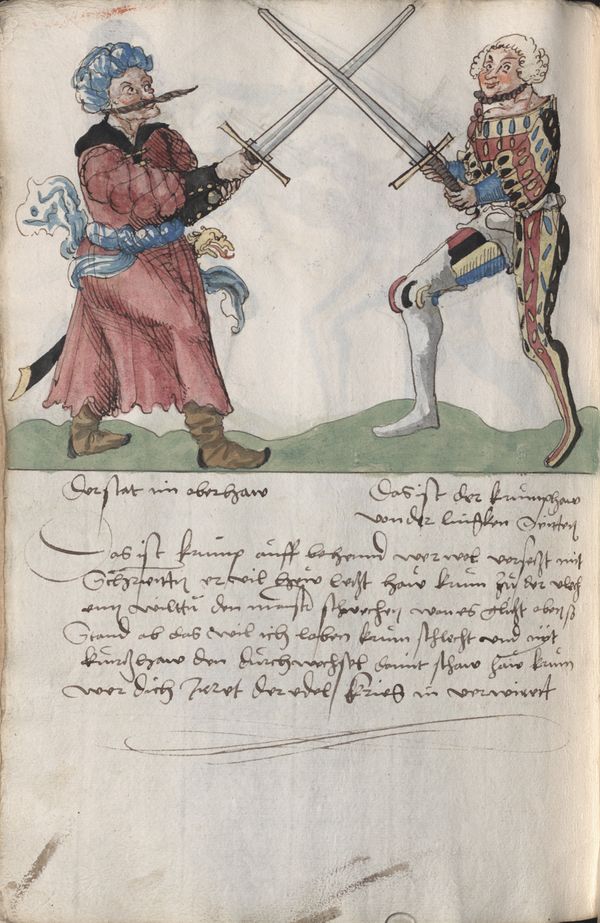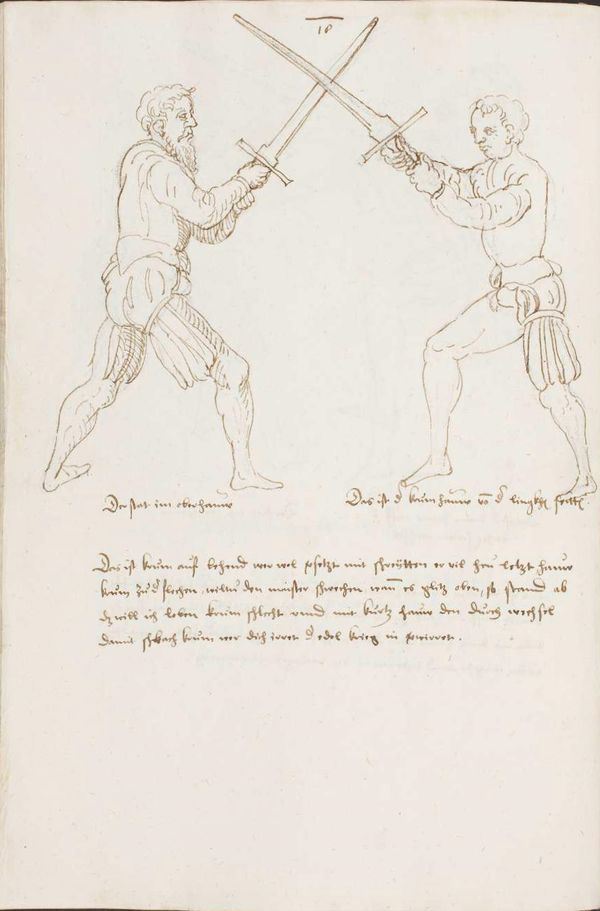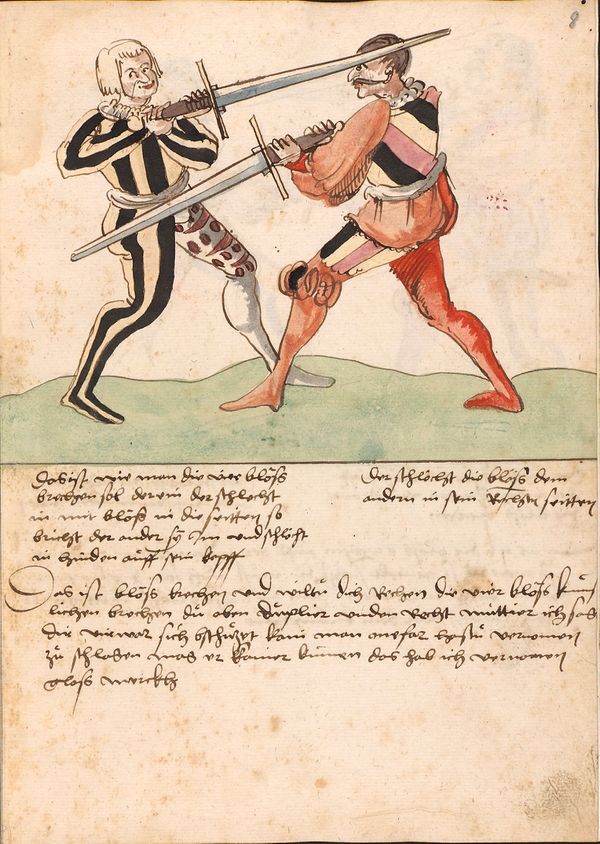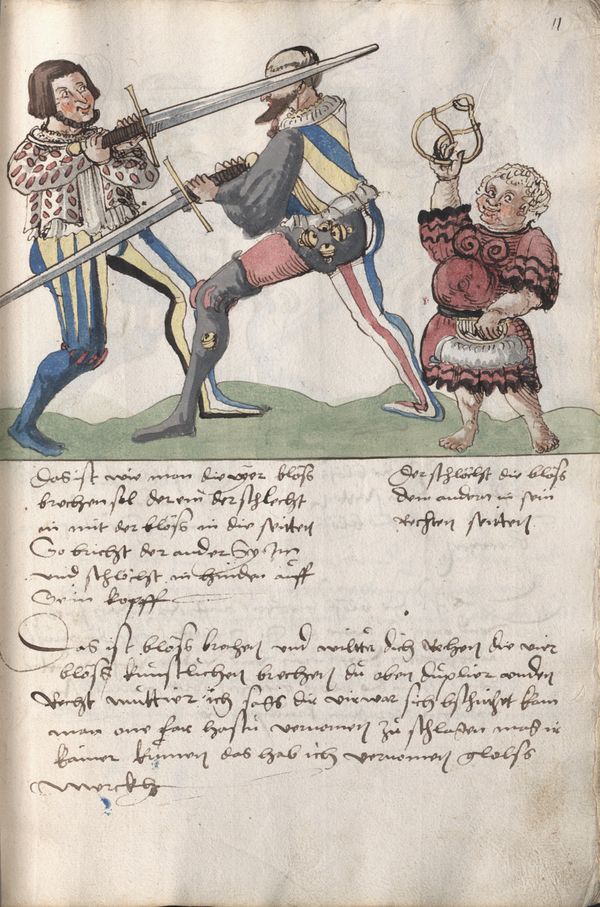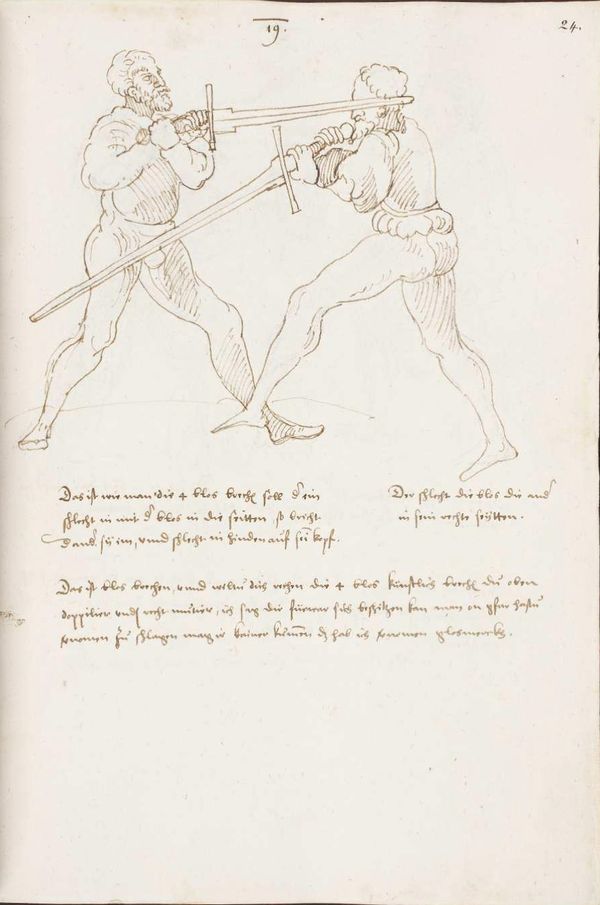|
|
You are not currently logged in. Are you accessing the unsecure (http) portal? Click here to switch to the secure portal. |
Jörg Wilhalm/Image comparison
Archetype (1523) |
Munich Version I (1523) |
Glasgow Version (1533) |
Munich Version II (1556) |
Wolfenbüttel Version I (1588) | |
|---|---|---|---|---|---|
[2] Whoever wants to hew upon you,
If you want to behold the art, hereafter what you strike crisply on. |
|||||
[3] The two both stand on the left in the over hew Don’t fence above on the left if you are right handed, |
|||||
[4] He stands in the over hew
This is about the wrath hew. Whoever hews you from above, take the wrath hew strong on your shoulder and hew in straight, over the parry, and hang and wind with the sword as if you want to thwart, and allow to drop to both sides with half failers and hit him with the long edge to the right ear to the head away. |
|||||
[5] He stands in the over hew
This is the wrath hew on the left side, and take the same from the left shoulder and hew him quickly in long to the head and hang and wind with it, and again use the failers, and hit yet again as stands written before and behind. |
|||||
[6] This is the wrath point
This is the direction, and note: whoever hews you from above, and take it with half failers, but hit in as before and behind. |
|||||
[7] He stands in the over hew
This is the other wrath point on the other side, take it also thusly: If they indeed both wrath hew from the shoulder, and one must make a stab from a hew, and the hew must be thrown, and take that also quickly away like the above. |
|||||
[8] Here, fences to the war
This is the direction about the war: Whoever’s war aims above, Gloss note. |
|||||
[9] This play is in the war This is also about the war, and should also know that in all windings, because there are very many breaks about them and also to them, realize how one bares with the war. Gloss note. |
|||||
[10] This is an outer winding and break from the war This is another play from the war and a break of the previous play, and is an outer winding that goes: hew or stab, find slices well. You shall also |
|||||
[11] This is also about the war This is also about the war: squint to the point You shall also turn crooked and search to and on and test his techniques, whether he is soft or hard in his technique. Gloss note. |
|||||
[12] This is also about the war This is about the war. The direction: Whoever rightly fights one with the sword near the neck, he must turn with a winding through and wind again. That goes well weak and strong below and turn your sword at the neck and jerk the left foot behind you and slice him or the neck. Gloss note. |
|||||
[13] Those are points in the war Those are the false points in the war. They go forth earnestly, because why they pertain to many passages, in addition, windings below through or wind nimbly above to the top and throw the point onto the hands and invert forcing run through also if you want to wrestle. |
|||||
[14] This is also about the war This is the war when you strike someone to the right side, then the other takes the war and needs no more from you than to parry your opening with the long edge and thus he shoots to you with the sword above over, and do as you see it pictured. |
|||||
[15] This is also about the war, a sword taking Gloss note: This is a sword taking and goes from the war, which one takes very slightly away, so that there are yet very many good plays which pertain to the war, and is many things of the war, and therefore you should note very many things. |
Page:Cod.Guelf.38.21 Aug.2º|021v.jpg|600px|center]] | ||||
[16] Here, fencing to the four openings
Here fence to the openings to the head and also to the side. Know to aim for the four openings, Also, it comes after at the end hereafter how you shall break the four openings. Gloss note. |
|||||
[17] Those are also two openings Those are the other two openings to the other side, therefore deceive and note on as the whole, and whoever takes the openings below, they will be shamed above near the ears. Gloss note weak and strong. |
|||||
[18] This is the crooked hew on the right side change
This is about the crooked hew, the direction: Crook on nimbly, or use if you want to wrestle, and step to him in the triangle. Gloss note. |
|||||
[19] He stands in the over hew
That is, crook on nimbly. Whoever parries well |
|||||
[20] This is how one shall break in the four openings: He hits him with opening to the side, thus the other breaks it to him and hits him behind onto his head
This is to break openings, and you want to reckon yourself, That I have heard. Gloss note. |

